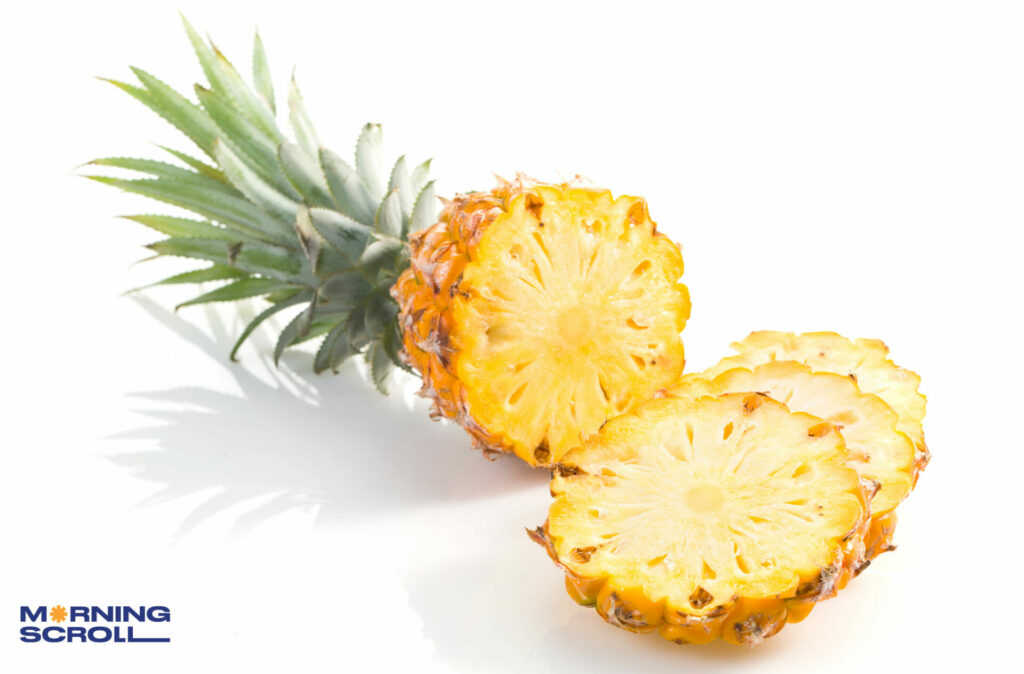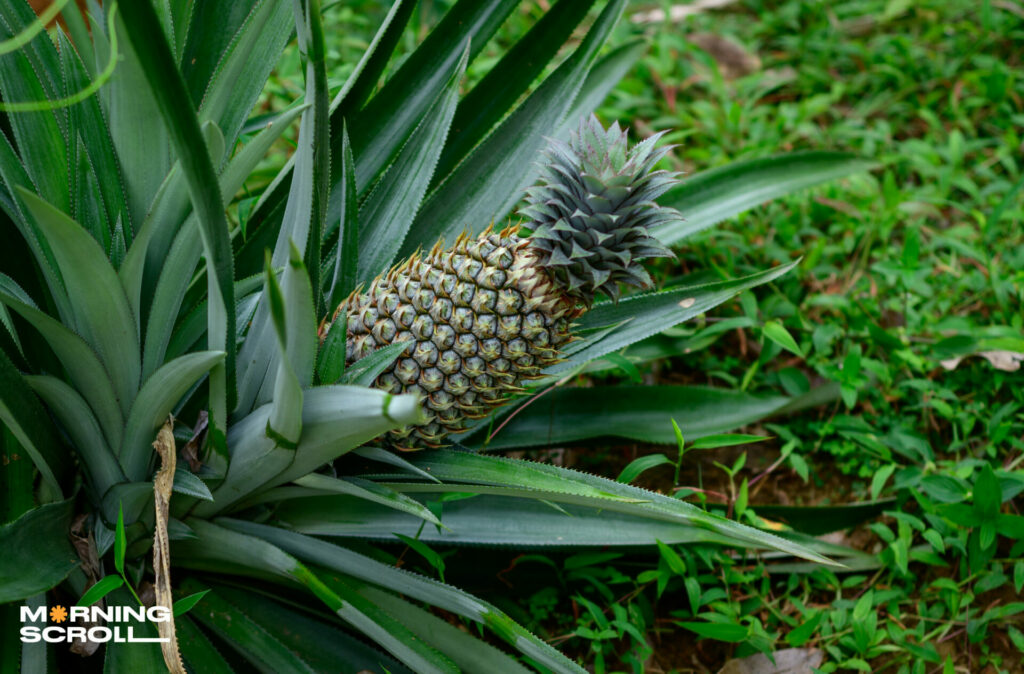Hello there fruit enthusiasts! Want to know the scoop on pineapples? Today we’ll tell you some secrets about them.We often toss them into the fruity gang, right? But surprise, surprise! Instead of hanging out in lofty tree branches, these sweet treats prefer to keep it low and grow on down-to-earth plants. Now, let’s rewind a bit and dig into the origin story of pineapples. Where did pineapples kick off this tropical party in the first place? Let’s find out!
History of pineapples:

● Pineapples got their name from mixing the Spanish word “piña,” which refers to a pinecone, and the English word “apple,” linked to its sweet taste, despite having no relation to pine trees or apples.
● They were produced in greenhouses in Europe in the 17th century, reflecting power and wealth, since only the elite would have them. Today, pineapples can be found everywhere.
Why don’t pineapples grow on trees?

Pineapples don’t grow on trees; they come from a tropical plant known as Ananas comosus. They aren’t classified as tree fruits primarily because they grow from a leafy, low-lying plant, resembling more of a herbaceous perennial rather than a tree-bearing fruit.
1. Pineapples are a part of the Bromeliaceae family, and the way they grow is more similar to that of an herbaceous perennial plant than a tree.
2. The reproductive structure of the pineapple plant takes shape at the rosette’s center, and the fruit takes form from a flowering spike that emerges in the middle. This spike undergoes a transformation, ultimately becoming the pineapple fruit.
3. It grows near the ground, with the fruit perched on a short, robust stem.It has a peculiar growth pattern that distinguishes it from standard tree structures.
4. Their plants have a relatively short life span, as each one makes just one fruit during its life. Once the fruit is picked, the plant doesn’t make any more fruit. Usually,farmers grow new plants from the crowns of the picked pineapples.
5. The pineapple fruit is a diverse fruit, which means it is formed by the fusion of several blossoms. Individual eyes on the fruit’s surface mark the spots where flowers formerly flowered. The tender component of the pineapple is formed by the combination of these separate flowers.
In a nutshell, pineapples defy the typical fruit scene by choosing a low-key existence on the ground instead of swinging from trees. Emerging from distinctive plants, these tropical wonders bring their own flair, adding a bit of playfulness into the fruit world. The next time you savor a pineapple, keep in mind: it’s a ground-level sensation, not your average tree-dwelling fruit!


